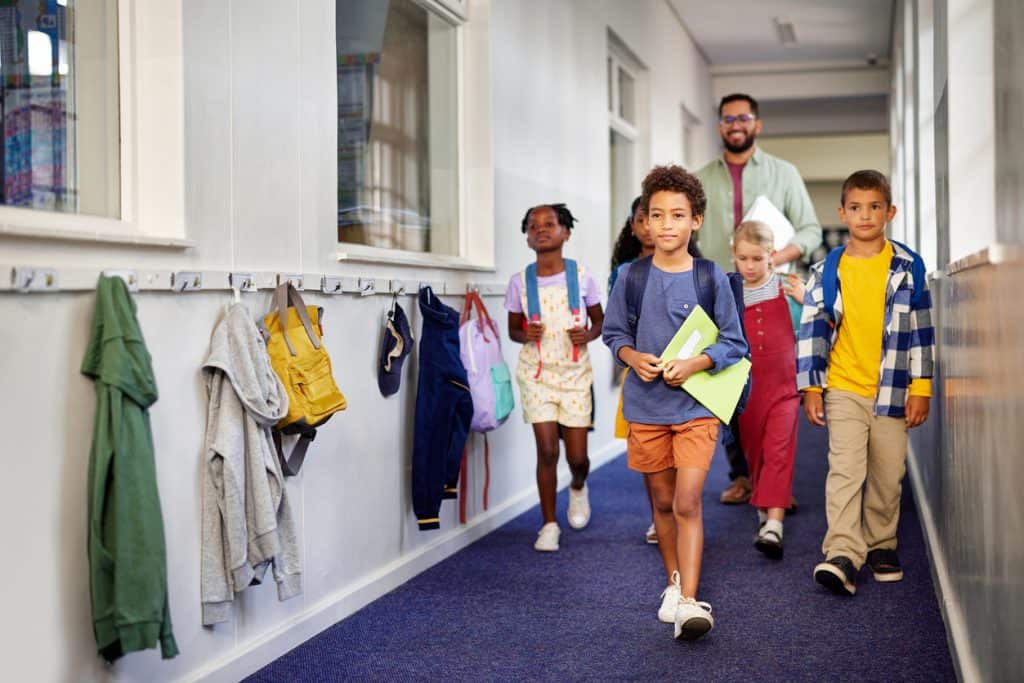A nationwide push to improve school safety measures has included the establishment of the “I Love You Guys” Foundation. The Foundation devised the Standard Response Protocol (SRP) to promote effective communication among students, staff, and emergency responders during critical incidents.
The SRP uses standard, clear language and directives to communicate and respond to emergency scenarios, ensuring that everyone understands what actions should be taken.
There are five action words associated with the SRP: Hold, Secure, Lockdown, Evacuate, and Shelter. When one or more of these action words is announced, the school community knows to follow the accompanying directives. Emergency responders are also alerted using the same verbiage.
The SRP Action: Shelter is typically followed by a predetermined hazard and safety strategy, which varies from school to school.

The SRP action: shelter alerts the school community that there is imminent danger and to seek group and self-protection. A school may use the shelter protocol for several reasons, including:
- Severe weather
- Tornado
- Earthquake
- Tsunami
- Wildfire
- Flood
- Hazmat spill
Seeking group protection can refer to various actions, but may include sealing the room; dropping, covering, and holding; or evacuating to a shelter area or high ground and holding.
How are School Districts using OSCR360 in their SRP?
As school districts develop and update their emergency plans, OSCR360 can play a vital role in the process. OSCR360 assists school safety teams with organizing and creating their emergency plans. Users captures 360-degree spherical images across the school campus, which are stored and organized within the OSCR360 software, creating a virtual walkthrough of the buildings/grounds. Within the 360 images, districts can add notes and documents, as well as label critical points of interest (i.e. fire extinguishers, security cameras, AEDs, medication storage etc.).
OSCR360 provides an accurate perspective of the building layout, as if the viewer is standing in each room looking around. Districts use OSCR360 to promote clear and consistent communication, to plan, and to train for their response during critical incidents.
How does OSCR360 help plan for the SRP Action: Shelter?
Shelter scenarios can be difficult to plan for because they can result from a wide range of circumstances. No matter the emergency, however, OSCR360 can assist school safety teams in planning, visually documenting and sharing key elements of the plans, such as:
- Where safety features and equipment are located.
- Areas with higher ground or “safe areas” (given various scenarios).
- Specific escape route outlines.
- Labeled reunification sites.
With OSCR360, there is no need for the group to physically enter a given space. During tabletop exercises and planning sessions, tour your school campus virtually. As members of the safety committee share ideas, OSCR360 helps to ensure everyone is on the same page by adding a visual component.
After plans are complete, they can be easily shared with entire school staff, board of education, or other community stakeholders. The plans can be easily reviewed individually or in a larger group session. OSCR360 plans are shareable with agencies and personnel in the community, such as law enforcement, fire departments, EMS, emergency dispatchers, county emergency managers and more. First responders can easily access and review building layouts for training and preparation purposes. Parts of the plan, such as the reunification site location and layout, can even be shared with parents and guardians.
Preparing for the Unexpected
The L-Tron team understands just how vital emergency planning, preparation, and training can be to ensure the safety of students and staff within a school district. The patented OSCR360 system was purpose-built with safety in mind. The L-Tron team is here for our OSCR360 customers 24/7/365 to provide technical support.